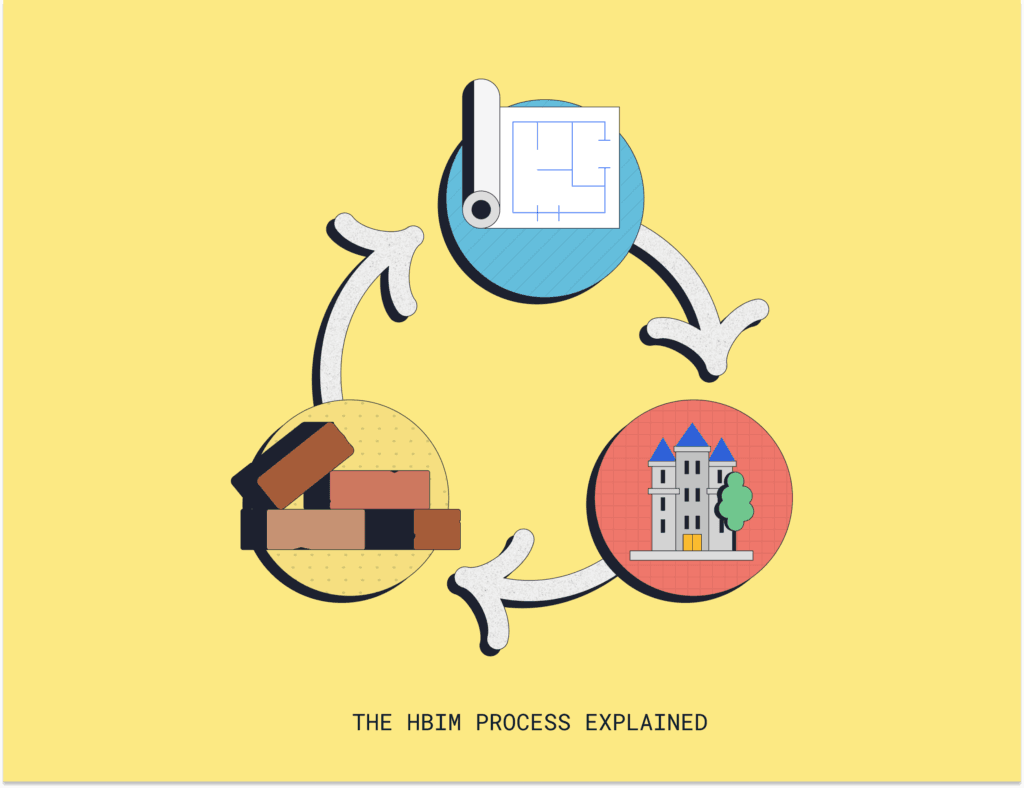Mike Lee
Updated: Oct 10, 2023
HBIM (Historic or Heritage BIM) Explained
This guide will give you an overview of the concept of HBIM, the combination of historical (or heritage) preservation and BIM.
What Is HBIM? A Guide to Historic Building Information Modelling
Have you ever taken a virtual tour of a famous building such as this tour of the Alamo? If so, you’ve experienced HBIM (also know as Historic BIM or Heritage BIM). This article will walk you through the concept and explain how that architects, engineers, and preservation organizations collaborate to use BIM today!

What is HBIM?
Historic Building Information Modelling (HBIM) is an extension of BIM tailored for historical and heritage buildings. It focuses on managing and documenting historic structures using parametric objects (models) created from both current data and historic research.
HBIM is rooted in the marriage of BIM tools with historic building preservation.
In 2009, Murphy, McGovern, and Pavia coined the term as the marriage of Building Information Modeling (BIM) to historical and heritage building preservation. In short, preservationists, architecture, engineering, and construction professionals collaborate to create the best models of a historic site. Then preservationists tie historic information such as pictures, video, and audio to the model so virtual visitors can interact and learn about the site.
The goal of HBIM is to create a rich visual and informational BIM model along with a database for preservation, restoration, and analysis. Imagine digitizing a 15th-century cathedral with all its architectural intricacies and historical annotations organized around a building. What about transforming a historic mansion's blueprints into a dynamic, interactive 3D model with captions? This is the type of environment that HBIM enables.
HBIM also aids in renovation, maintenance, and conservation projects by providing detailed 3D models enriched with historical context. A famous example is some of the restoration work on Notre Dame Cathedral was enabled by Laser Scans taken in 2010.

Other primary use cases of HBIM include:
1. Preservation through Documentation: A project may substantially change a historic structure. The project team may choose to capture and document the existing conditions for archival purposes.
2. Analysis: HBIM is a powerful tool to understand underlying issues (IE. structural or material decay) that cannot be mitigated. This data can allow engineers to plan ppotential interventions. A good example are the many challenges the Leaning Tower of Pisa faced over the years until it was finally stabilized in the 21st century.
3. Restoration: All major projects start with documentation. Restoration projects are no different. Once information has been archived in a visual manner, the project team can leverage an HBIM environment for planning, visualization, and executing restoration projects within a data-rich context.
4. Management: Preservation societies can use many HBIM platforms such as Layer App to manage ongoing maintenance, management, and protection of heritage assets.
It’s also the best way to experience a building on the other side of the world. For instance, Matterport hosts numerous historic building walkthroughs you can view for free!

How is an HBIM environment created?
For architects and engineers that work on renovation projects, much of the HBIM methodology will be familiar:
1. Data Collection
The first part of the project will typically be data collection. Technicians will use technology to take detailed digital surveys where photos (photogrammetry) or a point cloud (laser scanning) are captured to capture the precise condition of a structure.
2. Model (or Matterport) Creation
After the data has been captured, it will be processed into a model or digital tour in some type of BIM software. A larger, more intricate structure will take more time to document than a smaller or simpler one. Depending on how the data was captured, it may be turned into a Revit Model, or a 3D Tour in Matterport.
3. Integration & Viewer
The model or tour will then be uploaded to a database such as Layer App which has a viewer and file management capabilities. At this point, preservationists can start uploading historical documentation to the database.
4. Historical Layering
Preservationists and archivists will have an underlying plan for how visitors will view historic data. A structure may have different interior furnishings over the years. Historic photos, letters, and other material of interest can be uploaded to the database for viewers to learn and interact with.
5. Material Analysis
HBIM models may capture additional data such as material types or current conditions. This helps in understanding decay patterns and planning restoration work and preventative maintenance. You can use an HBIM system to show these as heat maps, points of interest, or other notes in your database.
6. View Access, the “Grand Opening”
Once all of the data has been loaded it’s time to put it to work. Beyond internal preservation and documentation uses, the general public is given access to view the structure over time, learn more about the preservation process, and increase awareness for fundraising purposes.
Conclusion
HBIM offers rich benefits, but can seem daunting to those who have never worked with BIM before. Accurate data collection and organization can be time-consuming. Older buildings might have undergone undocumented alterations over the years, posing challenges in creating an accurate historical model. Viewer & environment access can be difficult to set up for small organizations.
Software tools such as Layer App empower organizations of all sizes access to professional tools that make it easy to document, analyze, and share their structure! Best of all, setup, implementation, and long term support is all included for one low price!




